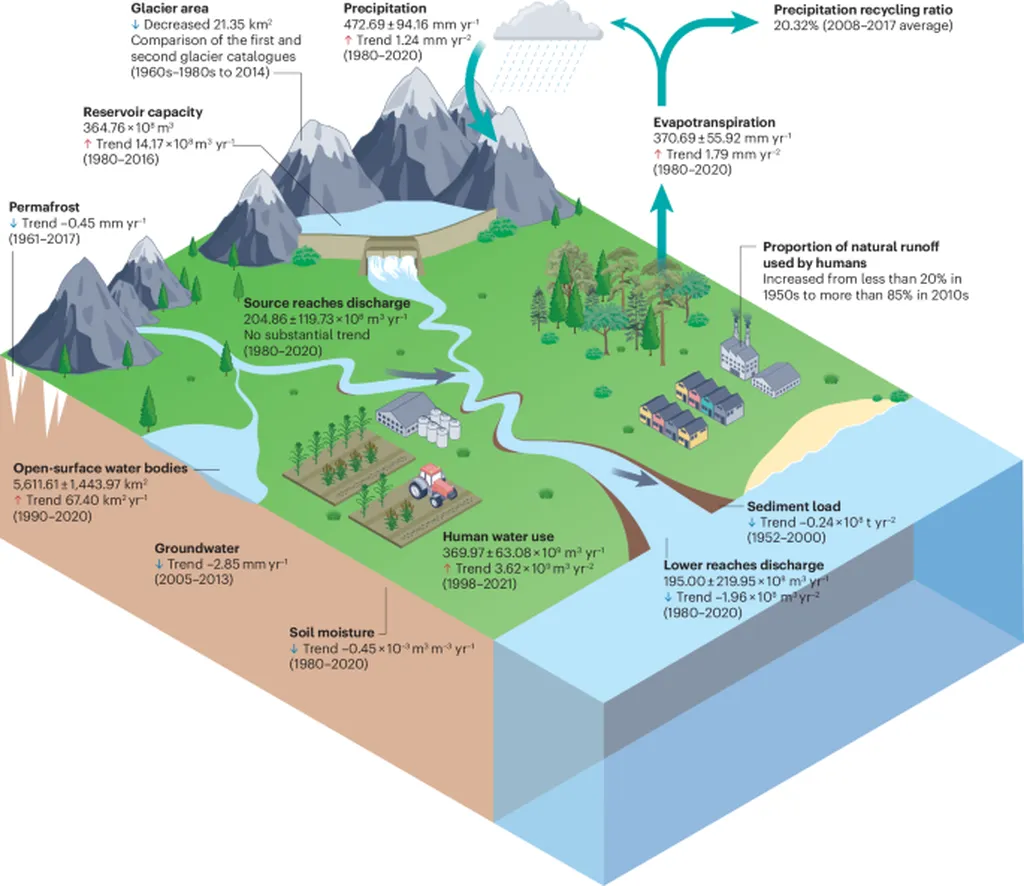In the heart of China’s agricultural landscape, the Yellow River Basin (YRB), a groundbreaking study has shed new light on the intricate dance between land use, carbon storage, and climate change. Published in *Frontiers in Earth Science*, the research led by Zhongbing Chang from the State Key Laboratory of Geo-Information Engineering and Key Laboratory of Surveying and Mapping Science and Geospatial Information Technology of MNR, Surveying and Mapping Institute Lands and Resource Department of Guangdong Province, Guangzhou, China, offers a compelling glimpse into the future of this vital region.
The study, which integrates the Patch-generating Land Use Simulation Model (PLUS) and the InVEST model, paints a detailed picture of how carbon dynamics might unfold in the YRB from 1980 to 2100 under various scenarios. The findings are not just academic; they have significant implications for the agriculture sector and land management strategies.
From 1980 to 2020, the InVEST model revealed a 12.10% increase in carbon storage in the YRB, with a notable surge of 16.9 million tons between 2000 and 2020. Grasslands emerged as the largest carbon reservoirs, storing a staggering 2487.24 million tons, which accounts for 51.03% of the total carbon storage in the basin. “This underscores the critical role of grasslands in carbon sequestration and the need for their preservation,” said Zhongbing Chang, the lead author of the study.
Looking ahead to 2030 to 2100, the study predicts a decrease in grassland area under the SSP1-2.6 scenario, while forest areas are expected to increase. The carbon storage gains under this scenario and the current scenario are primarily attributed to cultivated land and forests, despite significant losses from grasslands. However, the SSP2-4.5 scenario shows a carbon storage loss of 23.48 million tons, with a slight gain of 6.49 million tons under SSP5-8.5.
The regional disparities in carbon storage are also striking. While the northern regions of the YRB, dominated by grasslands, are projected to experience carbon storage losses, the southernmost and eastern regions are expected to see an increase. “This spatial variation highlights the need for tailored land management strategies that consider regional differences,” Chang noted.
The commercial impacts of this research are profound. For the agriculture sector, understanding future carbon dynamics can inform decisions about land use, crop selection, and sustainable practices. Farmers and agribusinesses can leverage this information to optimize their operations, reduce their carbon footprint, and potentially benefit from carbon credit markets.
Moreover, the integration of the PLUS and InVEST models offers a powerful tool for projecting carbon dynamics under different scenarios. This approach can be replicated in other regions, providing valuable insights for global agricultural and environmental strategies.
As we look to the future, this research underscores the importance of interdisciplinary collaboration and innovative modeling techniques in addressing the complex challenges posed by climate change. It also highlights the need for proactive land management strategies that balance agricultural productivity with environmental sustainability.
In the words of Zhongbing Chang, “This study provides essential scientific support for optimizing land-use structure and enhancing land management strategies across the YRB basin. It is a step towards a more sustainable and resilient future for the region and its agricultural sector.”

